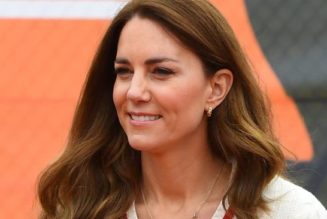
In 2018, a complaint for divorce was filed in New Jersey, signifying the end of another long-term marriage. This particular marriage produced three children, all emancipated at the time of commencement of the divorce action, and was funded entirely by the earnings of the Husband. Those earnings ranged, on an annual basis, from $1 million to $2 million, and averaged $1,313,000 over the five-year period preceding the divorce filing. His earnings were also utilized annually to fund the parties’ lifestyle. At the time of the divorce action, no retirement accounts existed, as they had been liquidated to fund the lifestyle. The husband and wife estimated monthly expenses of $80,853 and $92,147, respectively.
The procedural history of the case indicates that the trial court awarded permanent alimony, supported by the “extremely long duration” of the marriage and the “relatively opulent” lifestyle the parties maintained, which “consumed the entirety of [Husband’s] income.” The trial court also found that the Wife could earn no money as a result of having been “out of the workforce for decades.” Based on the foregoing, the trial court issued an order of permanent alimony of $450,000 annually, based on income of $1,313,000, but specifically did not make a numerical finding of lifestyle.
On appeal, the alimony determination was reversed as no correlation between the parties’ expenditures and the alimony award was made and, thus, there was no ability to determine how the alimony figured was derived. The remand directed the trial court to make a numerical finding as to the marital lifestyle and to then explain whether, and how, the alimony award meets such lifestyle.
New Jersey case law is well settled as to the correlation between the marital lifestyle and the alimony award, and includes the proposition that, “The basic purpose of alimony is the continuation of the standard of living enjoyed by the parties prior to their separation”1 and “to assist the supported spouse in achieving a lifestyle that is reasonably comparable to the one enjoyed while living with the supporting spouse during the marriage.”2
Of particular import to the case at hand was the explanation of the characteristics of the lifestyle and the quantification of each component therein, including those that were funded through means other than the Husband’s income, such as borrowings and liquidations of accounts and other assets. Such were the instructions given by the Appellate Court to the Trial Court on remand.
The Trial Court then increased the alimony obligation due from Husband to Wife but, simultaneously, credited Husband for pendente lite support in fashioning its revised order. The Trial Court, by way of explanation, acknowledged the parties had lived beyond their means during the length of the marriage and indicted a reliance on post-separation lifestyle expenses of the Wife. The Wife contended that the Trial Court’s new order did not adhere to the instructions handed down by the Appellate Court, and should have included an analysis of the marital lifestyle before allocating a post-divorce budget, and alimony award, to her.
Once again, the Appellate court reversed the Trial Court’s order and remanded for further proceedings. Specifically, the Appellate Court reemphasized the Trial Court’s disregard of the marital budget in crafting its orders and pointed again to the applicable lifestyle factors set forth in the relevant New Jersey statutes. The Appellate Court highlighted the quantification of the components setting forth such a marital lifestyle, and when it was appropriate to exclude certain expenses in setting an alimony award, such as private school tuition payments for children.
In conclusion, the procedural history and length of time between commencement of the divorce action and dissolution of the marriage was primarily attributable to the Trial Court’s failure to determine the marital lifestyle, the quantification thereof, and the division of those expenses, particularly those attributable to one party, to the children of the marriage or where such expenses were funded through some other means. The Trial Court is free to utilize the parties’ testimonies; case information statements submitted by the parties and admitted into evidence; expert analyses and reports; and other relevant information. It may accept or reject this information at its discretion.
In this case, neither party engaged an expert and neither party submitted reports or analyses aside from their individual case information statements. Would retention of an expert, submission of an expert report, and expert testimony have shortened the proceedings of this matter? It’s a case to consider when such an issue is at hand.
Sources
- Innes v. Innes, 117 N.J. 496, 503 (1990) (citing Mahoney v. Mahoney, 91 N.J. 488, 501-02 (1982)).
- Crews v. Crews, 164 N.J. 11, 16, 751 A.2d 524 (2000).









